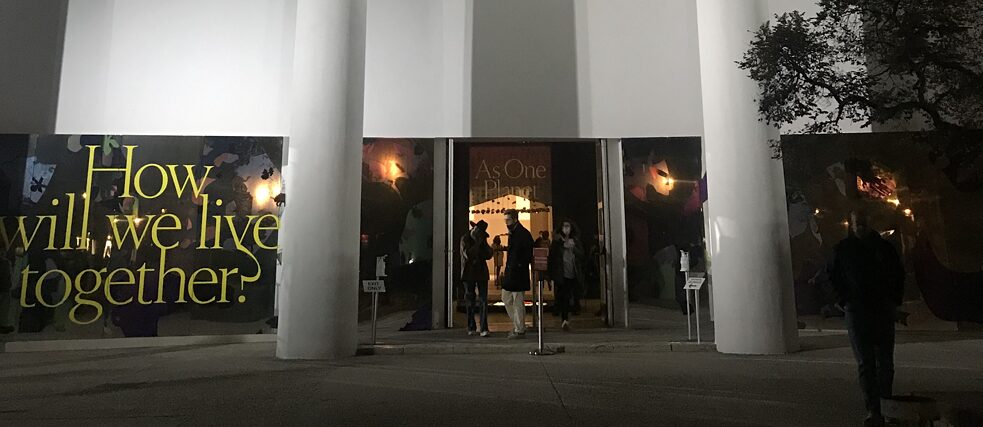Premiere in Venice | 11/20/2021
The conference in 2038

17th Venice Biennale of Architecture – How will we live together? | © Goethe-Institut Italien | Photo: Flavia Parea
“Conference of the Absent”, a performance by the German arts collective Rimini Protokoll, was staged last weekend at the Venice Lagoon, co-produced with the Goethe-Institut. No actors appear onstage: instead, audience members are asked to take their place. In this production Rimini Protokoll new possibilities for zero-climate impact representation, viable under pandemic conditions. Describing this project and placing it in context will be no simple matter.
By Flavia Parea
The context in Venice
Conference of the Absent was hosted at 2038, the German pavilion at How will we live together?, the 17th Venice Biennale of Architecture. It forms part of the Performing Architecture programme jointly co-ordinated and fine-tuned into a cohesive shared narrative by the Goethe-Institut and the Biennale. The Biennale of 2021 investigated new modes of community life, ways of dwelling in public and private space. Performing Architecture contributed to this line of inquiry in seeking to redefine the individual, the collective and institutions by exploring the performative dimension of architecture. The interdisciplinary 2038 group curating the pavilion share this focus on the future. Here they offered a utopian and optimistic vision of the future, presented as a glimpse of life in the year 2038. All this was done by means of QR codes, the only objects of any kind in the otherwise empty pavilion. This format also allowed for preparation of the Rimini Protokoll performance.Challenges of the pavilion system
Our story starts on this day of preparation. It was clear from early in the morning that the performance of Conference of the Absent at the Venice Architecture Biennale would cast the project in a new light. Still more so at the end of the day when we interviewed Rimini Protokoll member Stefan Kaegi, who very helpfully emphasised the challenges of bringing a performance of this kind to 2038 and more generally to the system of international pavilions.2038 may be perfectly aligned to the questions raised by Conference of the Absent, but the German pavilion is not a theater. When staged in theaters the performance coould make use of the darkness and intimacy of those environments, but at the Biennale the Conference took place in a white, empty, shadowless room, which Stefan rightly called "the white cube".
Along with the atmospheric element, the theater also secures a different kind of audience attention, whereas here spectators anxious to move onto the next pavilion give each country only a few minutes before taking a photo and leaving. Thus their attention had to be captured immediately. At the end of this first day I wondered: will anyone be willing to devote two of their precious hours to the Conference, perhaps missing other pavilions in the process? Will the performance work within the Biennale?
The end result
The premiere answered both questions affirmatively.The performance was adjusted to the pavilion atmosphere and the difference in audience expectations without losing its specific characteristics. The physical involvement of spectators brought a powerful experience to the Biennale. Everyone I spoke to outside the pavilion left feeling engrossed and enriched, whether they stayed throughout or only for 10 minutes. Not all, of course, were willing to commit to participation during that time, but the varying ways they took something from it expanded the scope of the production's meaning. They were excited to find their Biennale visit interrupted by the experience of lending their voice to someone else. All this was possible thanks to performative telepresence, something the Venice audience had now experienced directly. As they moved on from one pavilion to the next, perhaps they continued thinking about the life they performed a short time earlier.
Comments
Comment